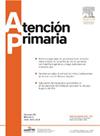初级保健的复诊率及其与患者安全事件的关系:西班牙的一项队列研究
IF 1.6
4区 医学
Q2 MEDICINE, GENERAL & INTERNAL
引用次数: 0
摘要
目的在考虑性别差异的情况下,分析PC的复诊频率及其与不良事件的关系。设计:回顾性观察性研究。站点:西班牙巴伦西亚地区的五个初级保健中心。参与者在2019年至2024年期间参加了50岁以上的患者。主要测量方法对541例患者的电子健康记录进行了回顾,以确定在指数就诊后20天内再次就诊的情况,并评估了相关的ae。结果共记录了2077例复诊(0.77例/患者-年),其中男性的复诊频率明显更高(男性1601例对女性476例;P & lt;0.001)。共发现85例ae(年发生率:3.1;95% CI: 2.5-3.8),女性的发病率比男性高18% (OR = 1.18;95% ci: 1.13-1.24;P & lt;0.001)。在伤害的严重程度上没有观察到显著的性别差异(P = 0.713)。复诊与ae相关(OR = 7.04;P & lt;0.001),使用Pfeiffer指数(OR = 1.21;p = 0.033)。相反,低和中等PC利用率与较低的ae概率相关(OR = 0.22和0.45;P = 0.003和0.043)。结论PC的复诊频率高,且与可预防的ae的发生有显著相关性。患者安全策略应考虑基于性别的差异和个体患者因素,如认知状况和护理利用模式。本文章由计算机程序翻译,如有差异,请以英文原文为准。
Reattendances in primary care and their association with patient safety events: A cohort study in Spain
Objective
To analyze the frequency of reattendances in PC and their association with adverse events, considering sex-based differences.
Design
A retrospective observational study.
Site
Five primary care centres in the Valencia Region (Spain).
Participants
Patients over 50 years old attended in between 2019 and 2024.
Main measurements
A review of 541 electronic health records of patients was conducted to identify reattendances occurring within 20 days after an index visit Associated AEs were assessed as well.
Results
A total of 2077 reattendances were recorded (0.77 per patient-year), with significantly higher frequency among men (1601 in men vs. 476 in women; P < 0.001). Eighty-five AEs were identified (annual incidence: 3.1; 95% CI: 2.5–3.8), with women experiencing an 18% higher incidence compared to men (OR = 1.18; 95% CI: 1.13–1.24; P < 0.001). No significant sex-based differences were observed in the severity of harm (P = 0.713). Reattendances were associated with AEs (OR = 7.04; P < 0.001), as was cognitive impairment, measured using the Pfeiffer Index (OR = 1.21; P = 0.033). In contrast, low and medium PC utilization were associated with a lower probability of AEs (OR = 0.22 and 0.45; P = 0.003 and 0.043, respectively).
Conclusions
Reattendances in PC are frequent and significantly associated with the occurrence of preventable AEs. Sex-based differences and individual patient factors, such as cognitive status and care utilization patterns, should be considered in patient safety strategies.
求助全文
通过发布文献求助,成功后即可免费获取论文全文。
去求助
来源期刊

Atencion Primaria
医学-医学:内科
CiteScore
2.90
自引率
8.00%
发文量
156
审稿时长
33 days
期刊介绍:
Atención Primaria es una revista que publica trabajos de investigación relativos al ámbito de la atención primaria de salud. Desde el punto de vista conceptual, Atención Primaria asume el nuevo modelo de atención primaria de salud, orientado no sólo a la curación de la enfermedad, sino también a su prevención y a la promoción de la salud, tanto en el plano individual como en el de la familia y la comunidad. En estos nuevos aspectos que definen el modelo de atención primaria de salud es en los que se centran los trabajos de investigación que publica Atención Primaria, la primera revista de originales española creada para recoger y difundir la producción científica realizada desde los centros de atención primaria de salud sobre cuestiones como protocolización de la asistencia, programas de prevención, seguimiento y control de pacientes crónicos, organización y gestión de la asistencia primaria, entre otros.
 求助内容:
求助内容: 应助结果提醒方式:
应助结果提醒方式:


